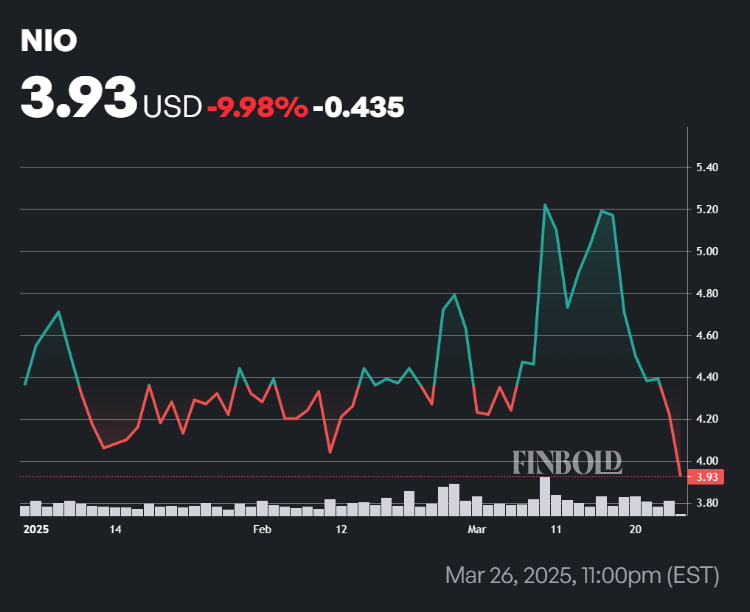After reaching a year-to-date (YTD) high of $5.22 on March 11 following key subsidy announcements, Nio stock (NYSE: NIO) went on to crash following a disappointing quarterly report.
The automaker’s Q4 and FY earnings call saw an earnings per share (EPS) miss, revenues that came in below expectations, and weaker-than-expected guidance.
By press time on March 27, the price of NIO shares had dropped to $3.93, a full 24.71% below the year-to-date (YTD) high. Since the start of the year, the Chinese electric vehicle (EV) stock has lost 9.98% in value.

Despite recent setbacks, the outlook shared by Wall Street analysts is far from bearish. While NIO remains a consensus ‘hold’ per equity researchers, the average 12-month price forecast for the stock, even as it has slipped slightly, implies a decent 16.35% upside as of the time of writing.
At present, there seems to be a disconnect between analyst coverage and the actions of market participants. Since the release of the earnings report, the short volume ratio of Nio shares has seen a sharp increase.
On March 21, when the earnings were announced, the ratio stood at 41.18. Since then, it has shot up to the low 60s, retreated to 55, and currently stands at 67.71, indicating plenty of bearish interest, per the data retrieved by Finbold from market intelligence platform Fintel on March 27.

Moreover, a recent announcement from the business suggests that the automaker could face prolonged selling pressure.
Here’s why short sellers could place further pressure on Nio stock
To backtrack a tiny bit, the reason behind the present increase in the short volume ratio is rather self-evident.
While Nio has marked impressive growth in year-over-year (YoY) vehicle deliveries, this hasn’t necessarily translated to the company’s balance sheet — and with unstable macro conditions, weak guidance, and the looming threat of a trade war, a clear, strong bullish thesis would have to emerge to dispel the uncertainty which currently surrounds the company.
In contrast, the most recent development surrounding the company appears bearish — at least at first glance. On March 27, the company announced a proposal to offer up to 118.8 million NIO shares in a new offering outside the U.S. At present, there are 1.94 billion units of NIO stock outstanding. If the plan goes through, it could cause significant share dilution and put more downward pressure on prices.
To be more precise, this move would represent a roughly 5.77% dilution. On the other hand, readers should note that share issuance is not necessarily a negative.
If Nio manages to efficiently leverage that newfound capital, this could end up being a growth catalyst. In the company’s statement, it said that the net proceeds from the equity placement would be used for research and development purposes.
While that might sound promising, R&D generally takes a long time to pay off, and for a stock facing immediate headwinds, benefits might not come soon enough to warrant investor confidence.
Featured image via Shutterstock








